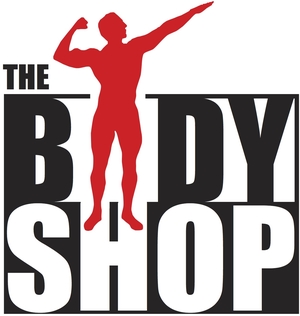When it comes to factors that can limit your fitness routine, chronic back pain is high on the list for many. First and foremost, we highly recommend a doctor’s visit to address your back pain and immediately ditching the training motto, “no pain, no gain.” Trying to work through back pain without figuring out what the cause is and how to properly address it, can end in huge setbacks.
However, how and what you are doing in the gym can either be helping or hurting your cause. After years of working with clients during and after physical therapy or chiropractic treatments, we’ve learned that chronic back pain can be linked to any combination of the following: weak core, inactive glutes, anterior pelvic tilting and tight hip flexors. While all parts of the body work together, or synergisticly, let’s look at three important players:
Glutes/ Hips
Core
Low back
If your glutes and core are weak or not firing on command, the majority of the work being done will fall on the low back. We have to address stability, mobility and strength to solve the problem.
Mobilize Your Hips (Mobilize)
Add corrective exercises to your warm-up routine. The body is one kinetic-chain and therefore, often times the source of our pain can be stemming from an imbalance or a tightness somewhere else in the body. Tight hip flexors (from sitting all day) can align your hips in an unfavorable position. When this occurs, typically your glutes shut down and in order to compensate and get the task done, your lower back kicks in and starts doing work it wasn’t intended or “built” to do.
Here is a basic but effective Hip flexor stretch.
Be sure to: 1) Squeeze glutes 2) Gently push hips forward 3) Reach arm up overhead and slightly to the opposite wall
Do Bird-Dogs and Cat-Cows (Stabilize)
Stuart Mcgill, a well-known researcher AND author in the field of spine health and fitness, has dedicated his studies to fixing and preventing low back pain. He is known for popularizing two simple but effective exercises that help your back by stabilizing your spine. These can be done every day or prior to your workout as part of your warm-up.
Turn Your Glutes On (Activate and Strengthen)
As we mentioned above, it’s common for people to not have enough body awareness or to not instinctively activate their glutes in a glute dominate exercise like squats or deadlifts --this causes the low back to take on more of the workload. It is understandable given the fact that so many don’t activate the glutes on a daily basis-- basically they fall asleep and have a hard time waking up. A great movement to help “fire” the glutes and create an awareness for hip position is the glute bridge. A key cue for an effective glute bridge is to start with a flat low back as you drive the glutes off the floor.
Anti-Train Your Core (Strengthen)
Unfortunately, many of us are programmed to think that thousands of crunches and sit-ups every day is going to give us six-pack abs. In actuality, flexing your spin and cranking on your neck hundreds of times per workout actually has negative effects on your spine. Rather than train your spin in the flexed position, start training your spine in a neutral position. A lot of great core exercises that train the midsection while maintaining a neutral core fall into either anti- rotation, anti-extension or anti-flexion exercises. Anti-training your core puts you in a position that forces you to fight against a resistance that is pulling you away from neutral. The purpose or function of having a strong core is to maintain stability when outside forces are applied, so it only makes sense that this is how we should train.
Start Light (Be Smart)
When it comes to weight training, sometimes our ego gets the best of us. If we attempt to handle a workload or weight that is too heavy, this often leads to a compromised movement pattern or more simply, poor technique. Poor technique usually requires the body to recruit other muscles that we are not intending to be used for a given movement. Keep in mind, the body will do everything it can to accomplish the task we are asking of it. This becomes especially evident in the big lifts like squat, bench, deadlift, bent over rows and overhead press where your back can be left in a very vulnerable position if the weight is too heavy. Start with moderate to light loads and become a student of form. While a lot of people and programs are focused on completing a certain number of reps, it is a great idea to back off and end the set when you start to feel your form breaking down. “But will I still get stronger?” ABSOLUTELY! Keep in mind, longevity is the key. The gym is the last place anyone should get hurt. Any great strength coach will tell you, the primary, number 1 focus or goal of any program is to help reduce the risk of injury.

